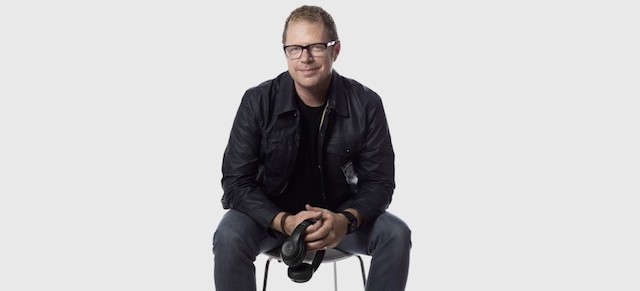When Apple bought Beats earlier this week, it also got two high-profile new employees. Dr Dre is going to work for Apple. So is music mogul Jimmy Iovine. But there’s one surprise: Robert Brunner, the industrial designer behind Beats, is not coming along for the ride. Maybe because he worked at Apple 25 years ago.
Through his company, Ammunition, Brunner released a statement yesterday praising the sale, saying he was “absolutely thrilled” that Beats was becoming part of Apple. But it seems that part of the deal was wresting the design away from Brunner himself:
Over the next few months, the design for Beats will transition away from Ammunition. It’s tough to step down as Chief Designer for a brand I take so much pride in, but it certainly makes it easier knowing we are handing the reigns over to one of the world’s most successful design teams.
Why isn’t this acclaimed designer part of the package? Iovine and Dre are definitely going to join Apple full-time (with the official titles “Jimmy” and “Dre”), spending as much time as possible in Cupertino. The fact that Brunner — whom it could be argued is just as critical to the operation as Iovine and Dre — is not part of the equation raises some questions. It could be saying something about the way that Apple itself sees the sale. Or it could be bad blood between Brunner and his former employer.
First, let’s look at the acquisition itself. It’s Apple’s most expensive of all time, and most high-profile hardware takeover. Would it surprise you that Jony Ive would want complete design control over a new product line that it’s bringing onboard? Not at all. This could very well be Apple’s mandate: Bring all the design in-house and tell the designer to “step down.”
But the move could also highlight the fact that Apple is far more interested in the Beats Music part of the deal than Beats Electronics. Apple’s plan isn’t about making better audio devices, it’s about consuming a real industry threat: a rising iTunes competitor. The sale is likely more about the streaming service — and Iovine and Dre’s music industry prowess — than it is in the actual headphone technology itself. Brunner isn’t essential to the Music side of the business.
But there’s also some history here between Brunner and Apple — quite a bit of it. Brunner was the one who originally founded Apple’s industrial design department in 1989. He was the person who hired a young Jonathan Ive, whose minimalist style would eventually come to define the brand. In this excellent oral history of Apple published by Fast Company, Brunner pokes at the fact that Ive’s fame eventually eclipsed his own: “I sometimes joke that when I die, my tombstone will say, ‘Here lies the guy who hired Jonathan Ive.’”
In fact, Brunner didn’t just hire Ive, he discovered him. He saw talent in this very young, very quiet student when he interviewed at his former company, Lunar. And he pursued him to join Apple, aggressively, over the course of six years until Ive finally said yes:
When I first got to Apple in 1989, I called Jony to see if he was interested in coming to work at Apple. He said no. He’d just started his own firm, Tangerine, and he wanted to see it through. In 1992, I hired Tangerine for this mobility project called Juggernaut. I have to admit part of the reason was because I wanted to see if I could get him interested in Apple. They built some wonderful models. When Jony came over to show them, it was a beautiful, sunny weekend in California. And when I asked again if he was interested, he said yes.
It wasn’t until 1996 that Ive finally joined the team. Yet Brunner left almost immediately to join Pentagram’s San Francisco office, leaving Ive as the head of the department, at only 29. When Steve Jobs returned to the company, the following year, he named Ive senior vice president. Brunner founded Ammunition in 2007, and began work on Beats around the same time.
The entire scenario is particularly intriguing as an example of the too-small world of Silicon Valley, and its revolving door of designers. Of course a powerhouse like Apple would spawn a generation of great designers who would go on to start great companies, which would then attract the attention of Apple. Iovine and Dre probably wanted Brunner because he had been at Apple. It’s just incredible how the whole thing has come full-circle: The biggest deal Apple’s ever made with an outside company is with a product that was designed by its first official industrial designer.
And it leaves us with some unanswered questions. Could it be that Apple wanted to bring Brunner on too and he said no thanks to joining Apple a second time around with his former protégée as his boss? Or was it Ive who forced him to step down as designer of the brand he built? Brunner wasn’t available for comment, and considering Apple’s historical unwillingness to comment on internal politics, we may never know the full story. But the bits and pieces that we do know does make for some fun dot-connecting.
